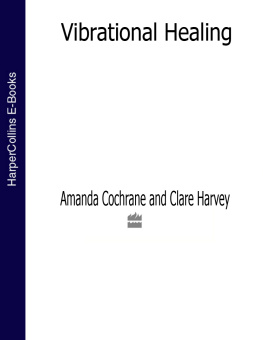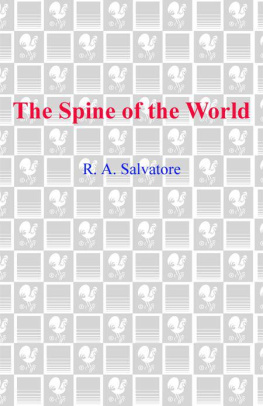SONG OF THE SPINE
by
June Leslie Wieder
Published and distributed by
Booksurge Publishing LLC
5341 Dorchester Road
Suite 16
North Charleston, SC 29418
866-308-6235
www.booksurge.com
Books may be ordered via the Internet from www.bone-toning.com or www.drwieder.com
Song of the Spine
Copyright 2004 by June Leslie Wieder
All rights reserved. No part of this book may be copied or reproduced in any form or by any means or stored in an electronic system without permission in writing from the author (contact via e-mail: ).
This book is an informational guide to bone toning and vibrational medicine. Techniques and approaches described in this book should not be used to treat physical or medical problems without prior consultation with a qualified healthcare professional.
Images from the book Cymatics: A Study of Wave Phenomena and Vibration ( 2001, Macromedia Publishing), by Hans Jenny, are used by permission.
ISBN 1-59457-470-7
Printed in the United States of America
CONTENTS
PREFACE
THIS BOOK IS THE RESULT of many years of research, experiencing, and experimenting with sound-health. I began chanting when I was a child, and today chanting is an integral part of my life.
While working in a psychiatric ward, I came to realize the valuable role that music and sound play in our day-to-day health and our well-being. When I played the piano for and with patients, we shared a universal language. The emotions we felt were penetrating and expressed enthusiastically.
This book represents a small fraction of the grandeur that is to be found in our harmonious nature, which pervades everything. I sincerely hope that this book helps to illuminate and stimulate the minds of seekers of truth, and that it will open your heart to the realization that we are all one, yet we each pulse to our own beat.
It is my deepest belief that every cell in our bodies represents a point of light in the heavens that sings its song of praise to life.
Breathe deeply. Enjoy the journey!
* * *
I gratefully acknowledge all those pioneers who were courageous enough to put forth their ideas about vibrational healing, all the musicians who have given us the experience of expanded consciousness, all the scientists and researchers who have given us greater insight in the field of vibrational medicine, and all the teachers and writers who devoted their lives to sharing this knowledge.
My heartfelt gratitude goes to my family, mentors, and friends Carol and William Wieder, Yaacov Wieder, the late Milton Trager, M.D., Gail Stewart, Dr. David Donaldson, Dr. Charles Skip Lantz, Jonathan and Andi Goldman, Sarah Benson, Joshua Leeds, and Shirley Helmick.
Special thanks to my copy editor, Jill Breedon, for her careful work in preparing my manuscript for publication, and to my consulting editors, Matthew Jon Prest and Richard P. Leavitt; and most heartfelt thanks to my chief editor, dear friend, and heartpartner, David Pope, for without Dezrt Dave this book would not have been possible.
For artwork I thank Suzi OGrady and for the cover art Marcia Didtler. I would also like to thank Major Tom for digitizing the cover illustration, and N. Kay Farrell of Graphic Impressions and Steve Davis, life coach and trainer at FacilitatorU.com, for the final cover design.
Loving thanks to those friends who have given tone, rhythm, and harmony to my life: Dr. Matthew Jon Prest, Patrick Michael Escott, Andrew Mitchell, Frank Rowicki, Sean Gallagher, Miron Mercury, Glenn Matson, Herm Peterson, Dr. Steve Angel, Louise Knecht, Louise Kelar, Julie Robinson, Ruthie Mae Lichten, and Teresa Holzer.
Deepest thanks to all my patients who moved me to seek finer sound solutions.
CHAPTER 1
SONG OF THE SPINE
In the beginning
there was the word
the sound
the Song
IN ALL CREATION , animals communicate with sounds and songs. The humpback sings beautiful songs that sound very much like human ballads. It is only male humpback whales that are known to sing, and their songs are like a deep, haunting mournful raga that once heard cannot be forgotten. These songs contain complex vibrational patterns, and although the humpback is capable of singing over a range of seven octaves (similar to the range of the piano), it typically sings notes belonging to only one octave. Like humans, whales use rhythm to remember their songs from season to season. Scientists believe that humpbacks use their songs to communicate with one another over hundreds or even thousands of miles. In some Native American cultures, it is said that whale medicine shamans have the ability to tap into universal consciousness.
Other mammals, such as bats, emit a steady stream of highfrequency ultrasonic clicks or chirps, up to 200,000 times per second. Electronic devices are needed to reduce these ultrasonic sounds to frequencies our ears can hear. Bats use echolocation to find their way and their prey. These echolocation chirps are like musical notes, so that the bat receives a musical picture.
The timing of the echoes composes an image of the landscape that describes the type of prey, the direction of its movement, and its velocity. Medical researchers are now developing a navigation device for blind persons that emits ultrasonic bat-like calls and converts the echoes into sounds that can be heard by the person using the device. Preliminary tests of the device show that humans adapt remarkably well to the bat echolocation system.
The American Museum of Natural History once had an alligator named Oscar that would bellow a B-flat whenever it heard a B-flat played on any kind of instrument. Some observers believe that the B-flat bellow is used by alligators as a mating call. But perhaps the alligators B-flat bellow is something much more primordial. Astronomers have recently discovered that a black hole in the Perseus star cluster emits a B-flat sound wave 57 octaves below the middle B-flat on a piano.
Birds compose songs using various rhythms, changing pitches and permutations. Citing the work of the late Luis Baptista, Patricia Gray (head of the biomusic program at the National Academy of the Sciences) wrote, The canyon wrens trill cascades down the musical scale like the opening of Chopins Revolutionary Etude . Baptistas analysis revealed that the canyon wren sings in a chromatic scale, which divides the octave into 12 semitones. Birds can identify a wide range of frequencies and remember their arrangement. Within a birds song, many frequencies or tones may be sounded simultaneously, and quite different birdcalls may sound the same to our ears. A birds brain can distinguish between the subtle rise and fall of pitches, perceive the changes in the sounds shape, and listen for repetitive patterns. So the next time you are called a birdbrain, take it as a compliment!
An ancient Chinese proverb says: A bird does not sing because it has an answer it sings because it has a song.
Is it coincidental that many different species share a similar pattern of songs and melodies? I think not.
Music calls to the heart of our emotions. Music can bring tears of joy or tears of sadness. The appreciation of music is universal and profound. The question remains whether there is any evolutionary advantage to the songs of humans and other animals. In searching for answers, many scientists are delving into the origins and purpose of music.
Could it be that music predates human civilization or language? I think so. Flutes made by Neanderthals more than 43,000 years ago have been recovered in France and Slovenia by paleoanthropologists.
Where in the brain is music processed? Are there specialized neurons that interpret music? According to Daniel J. Levitin and other researchers, when a person listens to music, neural structures in the cerebellar vermis, a primitive region of the brain, are activated. Because music so profoundly affects our emotions, Levitin suspects that it must have some ancient and important function.
Next page












